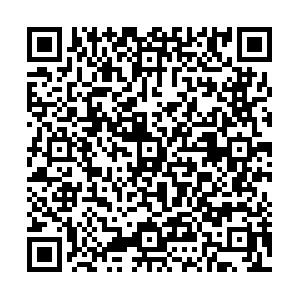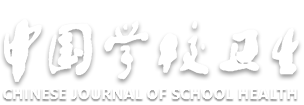Correlation of physical activity and screen time with anxiety and depressive symptoms among college students
-
摘要:
目的 分析大学生体力活动、视屏时间与焦虑和抑郁症状的相关性,为制定针对大学生焦虑和抑郁症状的干预措施提供参考。 方法 2024年5月,采用方便抽样与分层抽样相结合的方法选取浙江省绍兴市5所高校3 076名大学生,采用自编一般情况问卷、视屏时间问卷、焦虑自评量表和抑郁自评量表调查大学生体力活动、视屏时间及焦虑和抑郁症状等现状。组间比较采用χ2检验、Fisher确切概率法、t检验或方差分析,并建立多因素Logistic回归模型,探究大学生体力活动、视屏时间与焦虑和抑郁症状的相关性。 结果 大学生轻度、中度及重度焦虑症状的构成比分别为59.97%,28.99%及11.04%;轻度、中度及重度抑郁症状的构成比分别为64.96%,29.92%及5.12%。不同年级、每天视屏时间不同的大学生焦虑症状(χ2=15.99)和抑郁症状(χ2=16.54)检出率差异均有统计学意义(P值均 < 0.05)。不同性别和学科类型的大学生在体力活动方面差异均有统计学意义(t/F值分别为11.67,11.90,P值均<0.01)。多因素Logistic回归分析显示,当体力活动每周运动至少1 h天数<3 d时,视屏时间<2 h/d的大学生焦虑症状发生风险降低(OR=0.57),视屏时间 < 2,2~ < 3,3~ < 4 h/d的大学生抑郁症状发生风险降低(OR值分别为0.65,0.56,0.64);当体力活动每周运动至少1 h天数≥3 d时,视屏时间 < 2,2~ < 3 h/d的大学生焦虑症状(OR值分别为0.49,0.58)和抑郁症状(OR值分别为0.36,0.43)的发生风险均降低(P值均<0.05)。 结论 大学生体力活动、视屏时间与焦虑和抑郁症状存在相关性,过低的体力活动、较长的视屏时间容易增加大学生焦虑和抑郁症状的发生风险。 Abstract:Objective To analyze the correlation of physical activity and screen time with anxiety and depressive symptoms among college students, so as to provide a reference for formulating intervention measures for anxiety and depressive symptoms among college students. Methods In May 2024, the method of combining convenient sampling with stratified sampling was adopted to select 3 076 college students from 5 colleges in Shaoxing of Zhejiang Province. Self-compiled general situation questionnaires, Screen Time Questionnaire, Self-rating Anxiety Scale and Self-rating Depression Scale were used to investigate the current status of college students' physical activities, screen time, anxiety and depressive symptoms, etc. Inter-group comparisons were conducted by using the χ2 test, Fisher's exact probability test, t-test or analysis of variance. A multivariate Logistic regression model was established to explore the correlations between physical activity, screen time with anxiety and depressive symptoms among college students. Results The constituent ratios of mild, moderate and severe anxiety symptoms were 59.97%, 28.99% and 11.04%, respectively. The constituent ratios of mild, moderate and severe depressive symptoms were 64.96%, 29.92% and 5.12%, respectively. There were statistically significant differences in the detection rates of anxiety symptom (χ2=15.99) and depressive symptom (χ2=16.54) among college students of different grades and screen time daily (both P < 0.05). There were statistically significant differences in physical activity among college students of different genders and subject types (t/F=11.67, 11.90, both P < 0.01). Multivariate Logistic regression analysis showed that when physical activity was at least 1 hour per week < 3 d, a screen time < 2 h/d could reduce the risk of anxiety symptoms among college students (OR=0.57), and screen time < 2, 2- < 3, 3- < 4 h/d could reduce the risk of depressive symptoms among college students (OR=0.65, 0.56, 0.64); when the number of days of physical activity exercise was at least 1 h per week ≥3 d, the occurrence risks of anxiety symptom(OR=0.49, 0.58) and depressive symptom (OR=0.36, 0.43) were reduced for students with screen time < 2 and 2- < 3 h/d (all P < 0.05). Conclusions There are correlations of physical activity and screen time with anxiety and depressive symptoms among college students. Low physical activity and longer screen time are more likely to increase the risk of anxiety and depressive symptom among college students. -
Key words:
- Motor activity /
- Fixation, ocular /
- Anxiety /
- Depression /
- Regression analysis /
- Students
1) 利益冲突声明 所有作者声明无利益冲突。 -
表 1 不同组别大学生焦虑和抑郁症状检出率比较
Table 1. Comparison of detection rates of anxiety and depressive symptoms among different groups of college students
组别 选项 人数 焦虑症状 抑郁症状 检出人数 χ2值 检出人数 χ2值 性别 男 1 330 572(43.01) 2.93 302(22.71) 1.97 女 1 746 787(45.07) 343(19.64) 年级 大一 789 351(44.49) 15.99** 177(22.43) 16.54** 大二 780 312(40.00) 138(17.69) 大三 801 334(41.70) 168(20.97) 大四 706 362(51.27) 162(22.95) 学科类型 理工类 1 491 620(41.58) 2.85 343(23.00) 3.13 文科类 1 072 490(45.71) 210(19.59) 艺术类 513 249(48.54) 92(17.93) 是否独生子女 是 1 018 470(46.17) 2.97 232(22.79) 3.37 否 2 058 889(43.20) 413(20.07) 生源地 城镇 1 110 455(40.99) 2.93 255(22.97) 1.99 农村 1 966 904(45.98) 390(19.84) 每周运动1 h天数/d <3 1 678 780(46.48) 3.41 368(21.93) 2.66 ≥3 1 398 579(41.42) 277(19.81) 每天ST/ha <2 528 8(1.52) — 56(10.61) — 2~<3 418 114(27.27) 78(18.66) 3~<4 572 217(37.94) 123(21.50) ≥4 1 558 1 020(65.47) 388(24.90) 注:()内数字为检出率/%;**P<0.01;a采用Fisher确切概率法,P值均 < 0.01。 表 2 不同组别大学生PA与ST比较
Table 2. Comparison of PA and ST among college students with different groups
组别 选项 人数 每周运动1 h天数/d 每天ST/h x±s t/F值 x±s t/F值 性别 男 1 330 1.65±0.48 11.67** 6.10±1.28 -1.77 女 1 746 1.32±0.47 6.32±1.15 年级 大一 789 1.49±0.50 1.14 6.24±1.16 0.22 大二 780 1.38±0.49 6.19±1.31 大三 801 1.50±0.71 6.50±1.71 大四 706 1.00±0.69 7.00±1.45 学科类型 理工类 1 491 1.47±0.50 11.90** 6.21±1.17 1.08 文科类 1 072 1.35±0.48 6.33±1.12 艺术类 513 1.64±0.48 6.08±1.47 是否独生子女 是 1 018 1.50±0.50 1.17 6.20±1.13 -1.35 否 2 058 1.43±0.50 6.25±1.24 生源地 城镇 1 110 1.48±0.50 0.74 6.18±1.21 -1.36 农村 1 957 1.44±0.50 6.26±1.21 注:**P<0.01。 表 3 大学生PA、ST与焦虑和抑郁症状的Logistic回归分析[OR值(95%CI),n=3 076]
Table 3. Correlation of PA and ST with anxiety and depres-sive symptoms among college students[OR(95%CI), n=3 076]
自变量 选项 焦虑症状 抑郁症状 每周运动1 h天数/d <3 1.00 1.00 ≥3 0.93(0.72~1.20) 0.73(0.57~0.90)* 每天ST/h < 2 0.51(0.30~0.70)** 0.55(0.37~0.77)** 2~<3 0.64(0.45~0.89)* 0.57(0.42~0.76)** 3~<4 0.57(0.40~0.87)** 0.70(0.50~0.96)* ≥4 1.00 1.00 注:*P < 0.05,**P < 0.01。 表 4 大学生PA、ST交互与焦虑和抑郁症状的Logistic回归分析[OR值(95%CI),n=3 076]
Table 4. Logistic regression of PA and ST interaction with anxiety and depressive symptoms among college students[OR(95%CI), n=3 076]
每周运动1 h天数 每周ST/h 焦虑症状 抑郁症状 <3 d < 2 0.57(0.33~0.95)* 0.65(0.39~0.84)* 2~<3 0.75(0.50~1.16) 0.56(0.41~0.98)** 3~<4 0.62(0.40~1.05) 0.64(0.44~0.98)* ≥4 — — ≥3 d < 2 0.49(0.26~0.84)* 0.36(0.20~0.55)** 2~<3 0.58(0.34~0.96)* 0.43(0.28~0.68)** 3~<4 0.71(0.42~1.26) 0.62(0.38~0.98) ≥4 1.00 1.00 注:*P < 0.05,**P < 0.01。 -
[1] CASPERSEN C J, POWELL K E, CHRISTENSON G M, et al. Phy-sical activity, exercise and physical fitness: definitions and distinctions for health-related research[J]. Public Health Rep, 1985, 100(2): 126-131. [2] LOBSTEIN T, JACKSON-LEACH R. Child overweight and obesity in the USA: prevalence rates according to IOTF definitions[J]. Int J Pediatr Obes, 2007, 2(1): 62-64. doi: 10.1080/17477160601103948 [3] VAYNMAN S, YING Z, WU A, et al. Coupling energy metabolism with a mechanism to support brain-derived neurotrophic factor-mediated synaptic plasticity[J]. Neuroscience, 2006, 139(4): 1221-1234. doi: 10.1016/j.neuroscience.2006.01.062 [4] 王雨洁, 李明. 郑州高职院校学生体力活动与睡眠和心理健康状况的关联[J]. 中国学校卫生, 2020, 41(10): 1536-1539, 1543. doi: 10.16835/j.cnki.1000-9817.2020.10.025WANG Y J, LI M. Associations of physical activity, sleep and mental health among vocational college students in Zhengzhou[J]. Chin J Sch Health, 2020, 41(10): 1536-1539, 1543. (in Chinese) doi: 10.16835/j.cnki.1000-9817.2020.10.025 [5] GEBREMARIAM M K, TOTLAND T H, ANDERSEN L F, et al. St-ability and change in screen-based sedentary behaviours and associated factors among Norwegian children in the transition between childhood and adolescence[J]. BMC Public Health, 2012, 12: 104. doi: 10.1186/1471-2458-12-104 [6] HAMER M, STAMATAKIS E, MISHRA G D. Television and screen-based activity and mental well-being in adults[J]. Am J Prev Med, 2010, 38(4): 375-380. doi: 10.1016/j.amepre.2009.12.030 [7] DUNCAN M J, RIAZI N A, FAULKNER G, et al. The association of physical activity, sleep, and screen time with mental health in Canadian adolescents during the COVID-19 pandemic: a longitudinal isotemporal substitution analysis[J]. Ment Health Phys Act, 2022, 23: 100473. doi: 10.1016/j.mhpa.2022.100473 [8] TANG S, WERNER-SEIDLER A, TOROK M, et al. The relationship between screen time and mental health in young people: a systematic review of longitudinal studies[J]. Clin Psychol Rev, 2021, 86: 102021. doi: 10.1016/j.cpr.2021.102021 [9] 陈婷, 罗雅凌, 户华雄, 等. 江西省中小学生视屏时间及行为类型与焦虑抑郁的关联[J]. 中国学校卫生, 2024, 45(3): 370-374. doi: 10.16835/j.cnki.1000-9817.2024077CHEN T, LUO Y L, HU H X, et al. Correlation between screen time, screen behavior type and anxiety, depression among children and adolescents in Jiangxi Province[J]. Chin J Sch Health, 2024, 45(3): 370-374. (in Chinese) doi: 10.16835/j.cnki.1000-9817.2024077 [10] MOTAMED-GORJI N, QORBANI M, NIKKHO F, et al. Association of screen time and physical activity with health-related quality of life in Iranian children and adolescents[J]. Health Qual Life Outcomes, 2019, 17(1): 2. doi: 10.1186/s12955-018-1071-z [11] JANE COSTELLO E, ERKANLI A, ANGOLD A. Is there an epidemic of child or adolescent depression?[J]. J Child Psychol Psychiatry, 2006, 47(12): 1263-1271. doi: 10.1111/j.1469-7610.2006.01682.x [12] TANDON P S, ZHOU C, JOHNSON A M, et al. Association of chi-ldren's physical activity and screen time with mental health during the COVID-19 pandemic[J]. JAMA Netw Open, 2021, 4(10): e2127892. doi: 10.1001/jamanetworkopen.2021.27892 [13] 樊萌语, 吕筠, 何平平. 国际体力活动问卷中体力活动水平的计算方法[J]. 中华流行病学杂志, 2014, 35(8): 961-964.FAN M Y, LV J, HE P P. Chinese guidelines for data processing concerning the International Physical Activity Questionnaire[J]. Chin J Epidemiol, 2014, 35(8): 961-964. (in Chinese) [14] 杨洪杰, 刘善云. ROC曲线法建立大学生健康体力活动水平参考标准[J]. 体育学刊, 2022, 29(4): 138-144.YANG H J, LIU S Y. Research on establishing the reference standard of college students' physical activity level by means of ROC curve method[J]. J Phys Educ, 2022, 29(4): 138-144. (in Chinese) [15] WHO. Global recommendation on physical activity for health[R]. Geneva: WHO, 2010. [16] 黄金娇, 叶佩琪, 魏倩, 等. 不同类型屏幕时间与3~6岁儿童心理行为发育问题的相关性[J]. 中国学校卫生, 2023, 44(12): 1833-1838. doi: 10.16835/j.cnki.1000-9817.2023.12.016HUANG J J, YE P Q, WEI Q, et al. Association of screen time with psychological and behavioral development problems in children aged 3-6 years[J]. Chin J Sch Health, 2023, 44(12): 1833-1838. (in Chinese) doi: 10.16835/j.cnki.1000-9817.2023.12.016 [17] 陶明, 高静芳. 修订焦虑自评量表(SAS-CR)的信度及效度[J]. 中国神经精神疾病杂志, 1994, 20(5): 301-303.TAO M, GAO J F. Reliability and validity of revised Self-rating Anxiety Scale-Chinese Revision (SAS-CR)[J]. Chin J Nerv Ment Dis, 1994, 20(5): 301-303. (in Chinese) [18] 刘贤臣, 戴郑生, 唐茂芹, 等. 抑郁自评量表(SDS)医学生测查结果的因子分析[J]. 中国临床心理学杂志, 1994, 2(3): 151-154.LIU X C, DAI Z S, TANG M Q, et al. Factor analysis of Self-rating Depression Scale (SDS) for medical students[J]. Chin J Clin Psychol, 1994, 2(3): 151-154. (in Chinese) [19] 昌敬惠, 袁愈新, 王冬. 新型冠状病毒肺炎疫情下大学生心理健康状况及影响因素分析[J]. 南方医科大学学报, 2020, 40(2): 171-176.CHANG J H, YUAN Y X, WANG D. Mental health status and its influencing factors among college students during the epidemic of COVID-19[J]. J South Med Univ, 2020, 40(2): 171-176. (in Chinese) [20] 陈雨濛, 张亚利, 俞国良. 2010—2020中国内地大学生心理健康问题检出率的元分析[J]. 心理科学进展, 2022, 30(5): 991-1004.CHEN Y M, ZHANG Y L, YU G L. Prevalence of mental health problems among college students in Chinese mainland from 2010 to 2020: a Meta-analysis[J]. Adv Psychol Sci, 2022, 30(5): 991-1004. (in Chinese) [21] 陈雪峰, 傅小兰, 张侃, 等. 中国国民心理健康发展报告(2021—2022)[M]. 北京: 社会科学文献出版社, 2023.CHEN X F, FU X L, ZHANG K, et al. Report on the development of national mental health in China (2021-2022)[M]. Beijing: Social Sciences Academic Press, 2023. (in Chinese) [22] 杨婉秋, 沐炜, 章光洁, 等. 云南省大学新生抑郁焦虑与睡眠质量的相关研究[J]. 精神医学杂志, 2021, 34(2): 104-108.YANG W Q, MU W, ZHANG G J, et al. Relationship between sleep quality and anxiety, depression in freshmen in Yunnan Province[J]. J Psychiatry, 2021, 34(2): 104-108. (in Chinese) [23] 田莎, 宋炜熙, 田雪飞, 等. 医学专业大学生不同年级抑郁焦虑情况调查分析及常见问题处理[J]. 科教导刊, 2019(35): 163-165.TIAN S, SONG W X, TIAN X F, et al. Analysis on the status of depression and anxiety of students in the university of medical sciences[J]. Guide Sci Educ, 2019(35): 163-165. (in Chinese) [24] PHILIPPOT A, DUBOIS V, LAMBRECHTS K, et al. Impact of phy-sical exercise on depression and anxiety in adolescent inpatients: a randomized controlled trial[J]. J Affect Disord, 2022, 301: 145-153. doi: 10.1016/j.jad.2022.01.011 [25] BLUMENTHAL J A, BABYAK M A, DORAISWAMY P M, et al. Exercise and pharmacotherapy in the treatment of major depressive disorder[J]. Psychosom Med, 2007, 69(7): 587-596. doi: 10.1097/PSY.0b013e318148c19a -

 点击查看大图
点击查看大图
计量
- 文章访问数: 5
- HTML全文浏览量: 4
- PDF下载量: 0
- 被引次数: 0





 下载:
下载: